This article appeared in the Summer 2008 issue of Texoma Living!.
“You’re crazy!” That was Karen’s reaction when her husband, Tom Shields, said he wanted to leave their comfortable home in far West Sherman to live in a long-abandoned fire station near Austin College. But she’d had a similar reaction in 1985, when he wanted to leave a picturesque Dallas residence and raise their kids in a small town.
Now, nearly two years later, the fire station has been transformed. In its airy, loft-like living room, rays of sun ignite crystal chandeliers and stained-glass room dividers. Oriental rugs and leather couches warm high ceilings and concrete floors. A subtle coffee aroma hangs in the air.
Gourmet coffee, of course. Tom and Karen own, among other enterprises, the Boiler Room, an art-filled coffee house on a key street funneling cars from Highway 75 to Sherman’s Courthouse Square. Presided over by the Shields’ two grown children, Brandon and Meredith, the Boiler Room occupies the west end of the Sherman Steam Laundry building, constructed in 1901.
“We love bringing new life to old things, giving them a second chance,” Karen said recently. Call it adaptive reuse (as the Sherman Preservation League did in a 2007 award), rehabilitation, renovation, recycling or redemption, it’s the theme song of this couple’s empty-nest years.
After the move to Sherman, Tom commuted back to Dallas for business, while Karen taught at Texoma Christian School. At the end of 1990, they bought the Steam Laundry building. “It was a cool old building, and I saw an opportunity for rental income,” Tom said. “In the late 1970s, a man from California had remodeled it as offices. Now the bank owned it and wanted it sold. It was 40 percent occupied and reminded me of the Warehouse District in Dallas. I guess most people saw it as a headache and didn’t want to fool with it, but I was hoping I could give it some personal attention and turn it into a good opportunity.”
The investment paid off. Professionals—lawyers, accountants, doctors, dentists, counselors and Tom’s insurance business—occupy the suites. A carriage house out back has expanded over the years to accommodate more tenants.
At the west end of the laundry building, one space remained unused: the former boiler room. In August 2005, Tom and Karen had begun work to turn it into a coffee house, when son Brandon was diagnosed with a brain tumor. Surgery, treatments and recovery followed. Karen remembered asking Tom, “I guess we won’t do the coffee shop, right?”
“No,” he replied. “We are going to keep going on that. We are not going to build our lives around Brandon’s illness.”
“Somehow that was such a mood lifter for me,” Karen said.
Perhaps Tom reacted this way because he had had a similar experience at Brandon’s age. Raised on a farm in the Texas Panhandle, he excelled in high school sports and went to Texas Tech on a football scholarship. While there, he nearly died from an injury suffered while playing the game. “I realized how precious life is and how you have to make the most of it. There is a saying that sums up what I learned: There is no dress rehearsal for life.”
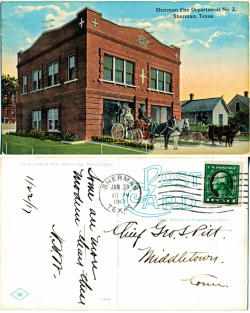
The Boiler Room opened in December 2005. Here college students peck at laptops, poets exchange drafts, business people confer intently. No one ever hints that you have been at a table too long. Today, in addition to coffee and tea, the shop offers sophisticated sandwiches, soups, salads and baked goods. Brandon and Meredith tweak the menu; occasional live jazz and changing artworks enliven the scene. Tom calls himself a “frustrated artist,” and his own paintings often decorate the Boiler Room’s walls. The artistic bent runs in the family, Meredith, who just relocated to Sherman from Louisville, Kentucky, is a graphics designer and art publisher.
When he got the chance, Tom acquired an old store on Jones Street, across from the Steam Laundry. Brandon lives upstairs, and Tom eyes a shed in back for an art studio. The adjacent working-class neighborhood, which in the 1900s supplied the laundry’s workers, is filling up with lawyers’ offices. The coffee house reinforces civic efforts to bring new life to downtown.
With the Boiler Room up and running and Brandon “doing great,” Karen started to relax. Then, in May 2006, Tom took her to see the fire station. “It was the saddest building—a dirty, awful mess,” she recalled. “But when we opened the front door, just the windows on three sides let me know it was going to be a great place. We felt totally at home from the day we moved in.”
Fire Station No. 2 was built on Willow Street in 1913 to serve East Sherman. In those days, horses occupied the first floor. Firemen slept upstairs during on-duty days and went home for off-duty days. Many lived nearby. The station served as a kind of community center for the neighborhood, a place where wayward boys were mentored, men played dominoes or spun tall tales, and wives stopped by with food or gossip. People came here to vote, and schoolchildren slid down the fire pole during Fire Prevention Week tours. The station and the neighborhood are deeply entwined in local memory.
Tom and Karen occupied their new home in February 2007. “A big asset with living here is the neighborhood, which we just love,” Tom said. A neighbor brought a wonderful Mexican dinner the first night. A lawyer from down the street, whom they had never met, gave them a framed vintage postcard depicting the station. Firemen and neighbors stopped by to inspect the renovation, share memories, and thank the couple for giving this much-loved building a new life.
Tom enjoys walking the dogs and riding his motorcycle in this ethnically diverse area. Among his and Karen’s ordinary pleasures are eating at nearby Tito’s Tacos and stocking up at Guerrero’s Panaderia and Grocery. “We love Mexico, and we figure that living here is as close to San Miguel as we are going to get,” Tom joked.
“You don’t realize the life of a neighborhood until you’re in it,” Karen said.
“There are all these families, Fielder Park, the steeple of Key Memorial Methodist Church lit up at night, the trains. Austin College is so close. It’s a beautiful campus.”
A few blocks away from the Shields home, Willow intersects Brockett Street. The City of Sherman has earmarked Brockett for beautification as a major corridor connecting Austin College and downtown. “All these little houses have so much potential,” said. Karen. “We hope young couples will see that they don’t have to buy a tract home with a huge debt to have a nice lifestyle. Or older couples like us, downsizing.”
If a football injury defined Tom’s young adulthood, maybe another life altering experience defined his middle age. In the fall of 1999, with the children grown and off on their own journeys, he and Karen asked themselves, “What are we going to do for the rest of our lives?” A few months later, Tom went to Cuba on a church mission trip.
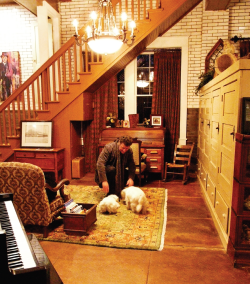
“Suddenly I woke up to the fact that there was a whole world out there that I had never dreamed of. I wanted to get involved.” This epiphany, Tom feels, opened him to ways of thinking and living “outside the box.” He has returned to Cuba several times a year since then. He also volunteers with a friend’s medical clinic in Mexico.
Karen sees the twists and turns of their lives as circular: “We’ve been blessed, and in return we can make a difference in people’s lives. Then we’re blessed again. I like things with a story.”
Among the blessings is Bud Newman, who for decades has owned the barbershop across the street from the fire station. Now he’s sold Tom and Karen his building, to insure that it is respected and used appropriately in the future. And Meredith Shields just bought the cottage next to the barbershop.
I’ll tell you the greatest blessing, though,” Tom said. “I married a woman who is willing to step out into the unknown when it feels right.” He and Karen smile at each other across a living room where horses once munched oats.

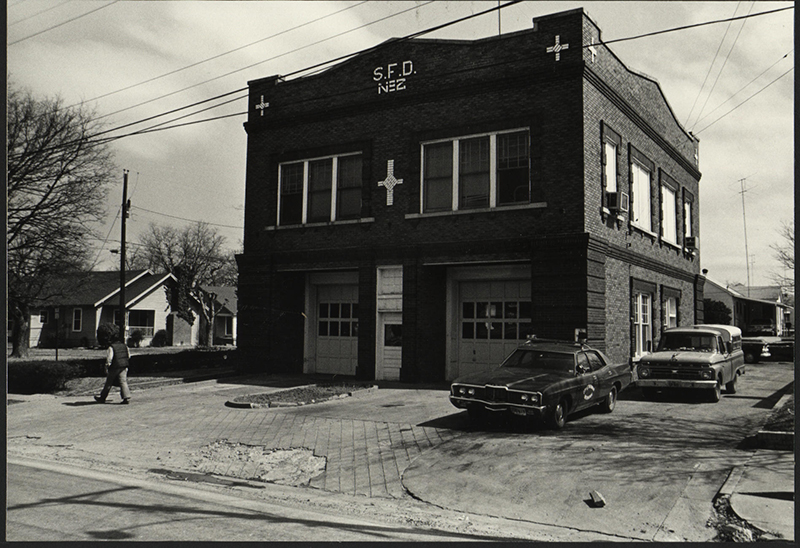
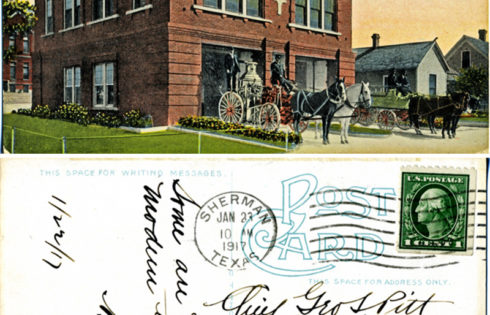
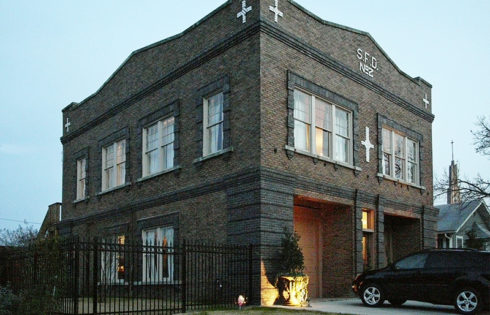
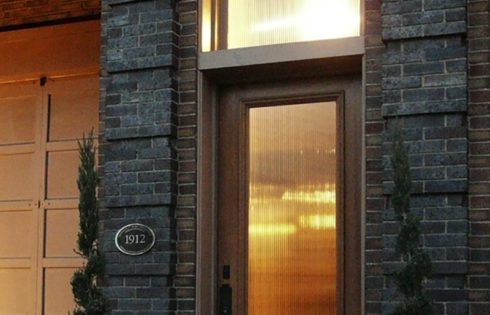
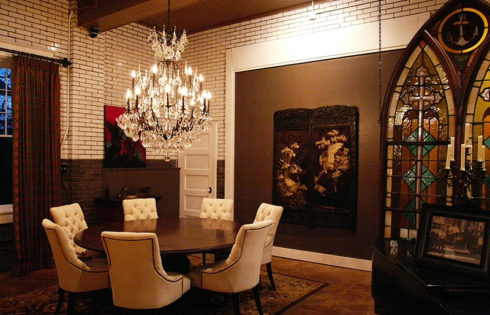
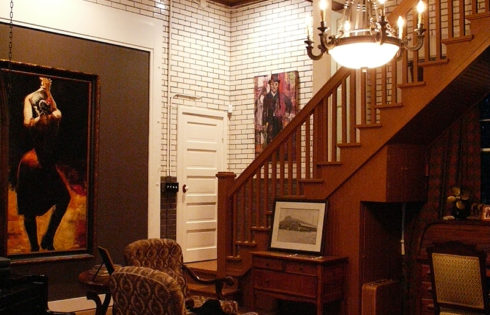
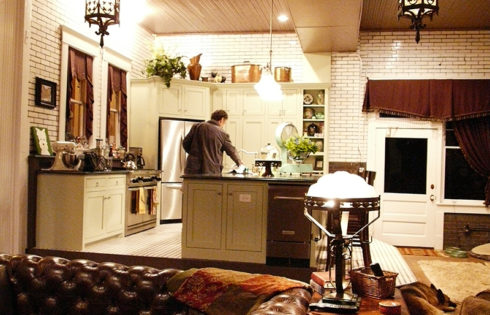
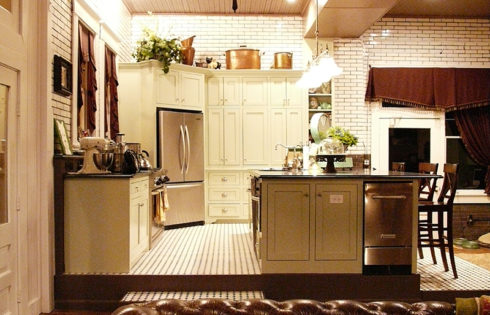
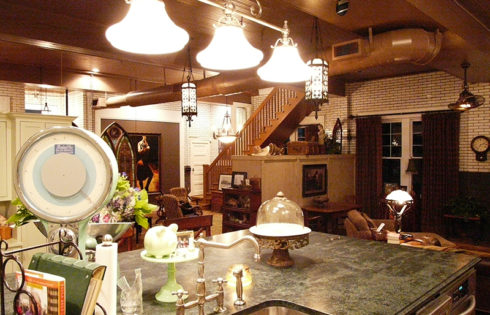

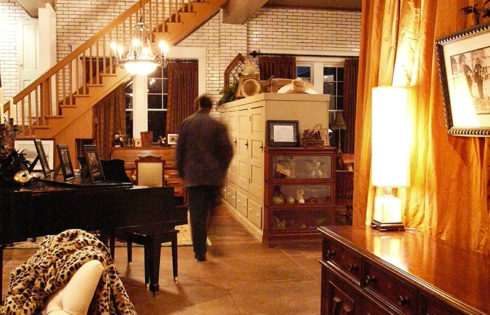
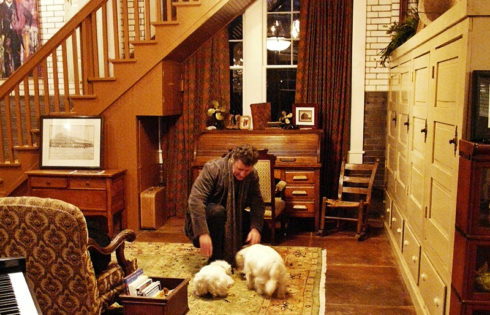
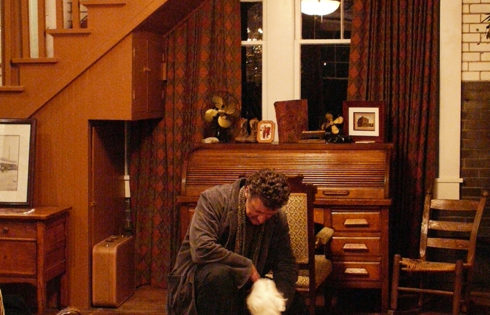
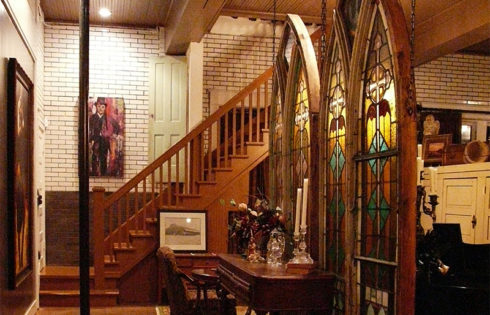
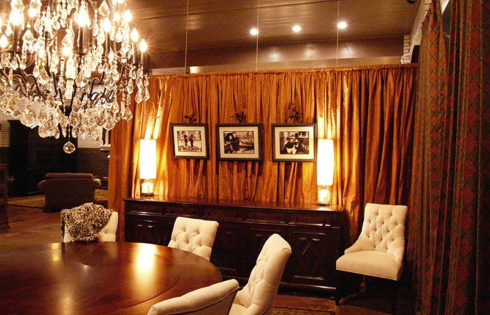
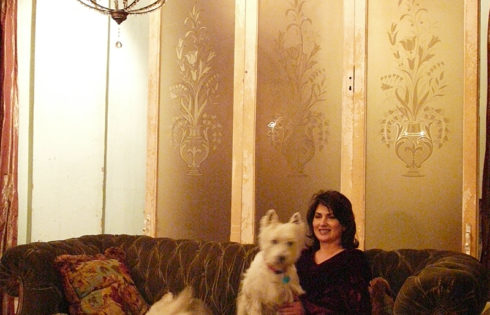
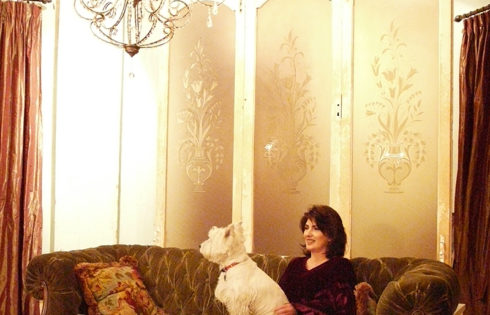
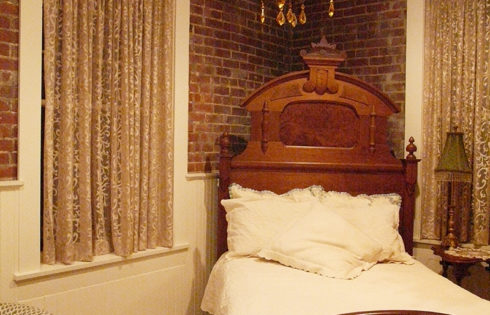
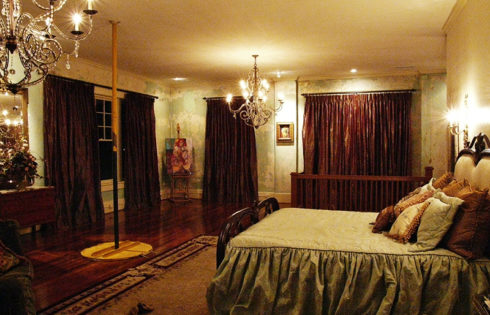
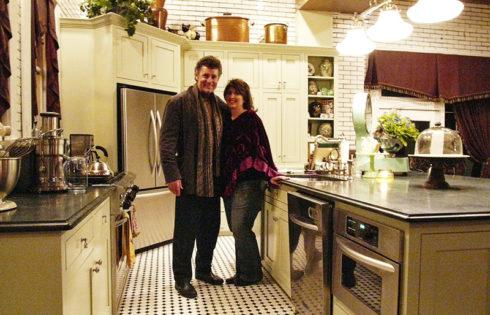
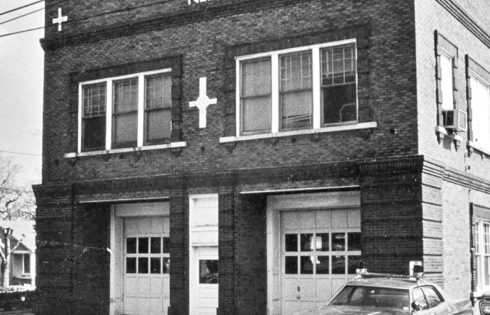
My paternal grandfather was a fireman at that station. He lived just behind it, the church they attended was two doors down, his barber was across the street from the firehouse and the grocery they used was a block away. The Firehouse was still operational when I was a kid, though my grandfather had passed the year before I was born. I took tours of the station in kindergarten, they still had a pole to slide down. My Dad knew all the firemen who had been friends of his Dad. They had a cement vat behind the station where they kept minnows for fishing trips. My Grandmother continued to live in the house behind the station the rest of her life, but the station closed before I was in high school.
Gary,
Thanks for the wonderful details about the laundry. I’ve taken parts of your comments to put online with other information about the laundry. It’s great to have personal memories to help bring the “picture” to live.
We lived in Sherman for 26 years and went to Key Memorial UMC. Our daughter attended Austin College and although we lived in west Sherman, we loved the neighborhood. Kudos to Tom and Karen!
This is a great story! We lived in Sherman for 26 years and attended Key Memorial UMC next door and our daughter attended Austin College. Kudos to Tom and Karen for renovating and living in this historic landmark. Wow!
Happening onto this page, resulting from a search for the Sherman Steam Laundry, it brought a smile to my face to see a photo of the old building; and to see that the building had been so inventively reconditioned. Kudos!
Myself, growing up outside of Dallas (about 2 hours away driving 70mph); yet, with younger brother, Steve, in tow we found ourselves making the near routine biweekly travels with our Mom going to see her mother and father, Eula and Charles H. Myers, in Sherman. You see, Charles Myers, was my grandfather and he began working at the laundry in 1918; and worked there until it closed in 1974. It was through these routine trips of going to see our grandparents that the laundry, at least on Saturdays, began to be a part of my playground for life’s lessons in a mechanical, electrical and plumbing opportunity of a lifetime!
Reading about the boiler room did make me smile. I often comment in present day about the layout and assembly of the boiler room being on the end, with the (machinist’s) machine room being next and then the engine room – all for good reason! Boilers were a pressurized vessel, pressure being a result from heating the water and making steam to drive the engine, with the condensed steam providing hot water as a byproduct for the laundry. And from time to time, boilers had been known to “blow” – and it was found to best to keep them on the end of the building for good reason!
The boiler had to be inspected annually, where someone would crawl inside through a small hatch door and check the tubes for cracks and the rivets for being tight. I cannot recall, but the State of Texas had a required boiler inspection (by a boiler inspector), maybe annually? And grandpa would have to completely shut down the heat, drain it down so it could cool off for the inspector to crawl inside – which was always a tedious task that impacted the laundry – because you could not just “turn it back on” to start the laundry for the next day … it took a while to heat up.
The old steam engine was a two valve, single piston (10 or 12 inch bore?) that had a nameplate “50HP Cordless” on the side. Before electricity, the building had a line-shaft that ran through the length of the building, giving all of the mechanical components a single source of rotational power from underneath. The lineshaft had pillar & pedestal bearings that were poured with Babbitt.
Sometime in the infancy of electricity, our first endeavors were with direct current, D.C. power; hence a D.C. generator being installed just aft of the flywheel – mostly for lighting I would have assumed. The earlier belts were made of leather, later being replaced with neoprene.
Anyway, I am guessing sometime in and around the 40’s, alternating current (A.C. power) became the norm; hence the need to upgrade the power system to an A.C. generator. When they did, they simply installed the new generator further rear of the D.C. unit and when the new belt went on – it simply created a larger triangle beyond and over the D.C. generator’s pulley; which as a kid, I thought was a really cool use / design.
I could rattle on for hours about the laundry; actually, I still have the 1905 drill press that came from the machine room. It too originally was driven from the engine’s lineshaft and was ultimately converted in the 40’s to A.C. power with a 3 phase motor (which it still has today). There was also the main time piece of the laundry, a spring wound Pennsylvania Grandmother clock (about 24 inches in diameter).
The laundry, was not all about my grandpa, it was also about my grandma. She was short, overweight and a grandma through and through with the best Sunday roast dinners with carrots and potatoes that you ever had. She also ran one of the marking machines – you know the little machine (actually it was pretty big) that would place your name (full alphabet and numbers) or ID in indelible ink in some inconspicuous place on the garment. She did this until 1970(?), when we had a really hot summer and it got to be over 130 degrees in the shirt line that day; and she took ill with a stroke while at work – ultimately passing about three months later.
Looking back, overall, Sherman was fun. But, at the time, there were those weekends when we begged and pleaded NOT to have to go! I am certain that somewhere from above Grandpa catches a glimpse of me soldering, brazing, welding or wiring something – hopefully, it meets with his standards from a day long gone by?
Gary Hestand / hestassoc@aol.com